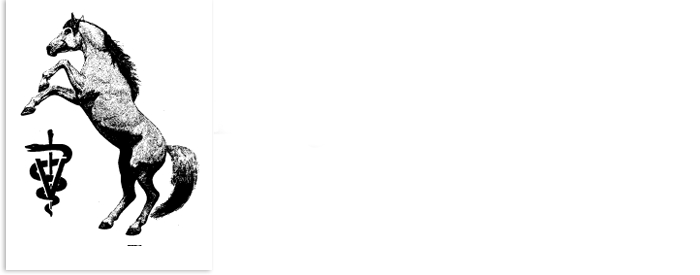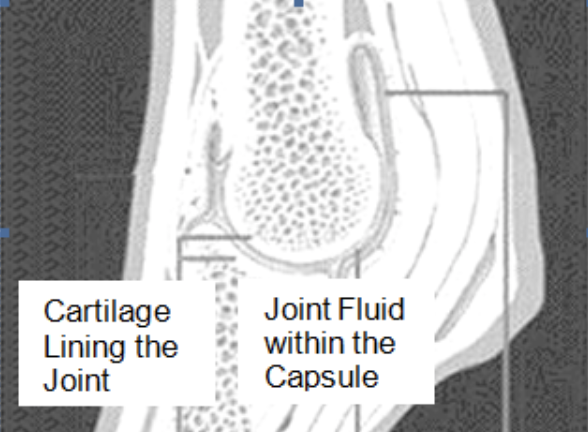Joint Disease
Joint disease is a common issue among competitive and active horses. The joints most affected in hunter/jumper, dressage and reining horses are the hocks, and the coffin joints in the front legs, followed by the stifle joints. In thoroughbred race horses, the most common joints affected are fetlock and carpal (knee) joints. All competitive horses deal with joint disease.
The joint is the meeting of two bones. At the end of the bones there is a thin layer of cartilage. Each joint has a capsule which encloses the joint and keeps the joint fluid within the joint. Ligaments, called the collateral ligaments, attach one bone to the other on both sides of the joint to hold it together.
In healthy joints the cartilage acts as a cushion and the joint fluid acts as a lubricant and provides nutrition to the cells within the cartilage. With strenuous use the cartilage breaks down. There is a continuous wear and repair cycle.
When the wear on the joint exceeds the ability of the joint to repair itself joint disease results. Theories about the causes of joint disease include over-load of force on the joint, instability of the joint with fatigue, obesity and heredity. Joint disease is a continuum. It starts with synovitis, which means joint inflammation. There may be excess joint fluid production in response to this inflammation. There can be defects in the cartilage that lines the joint. However, since cartilage does not show up on x-rays, x-rays may appear perfectly normal.
At this stage subtle signs can provide clues, including mild pain, swelling and/or heat. The horse may be hesitant to perform activities they use to do with ease such as flying lead changes, jumping, sliding stops or lengthening of stride.
A full examination, including diagnostic blocks and x-rays, can be important in identifying which joint or joints may be affected.
The next stage is arthritis, where little spurs can be seen on x-rays. On arthroscopy you find cartilage defects and spur formation. The final stage is arthrodesis which means the arthritis is so severe that the joint fuses.
If at all possible, the goal is to identify joint disease before it has progressed to arthritis. So you want to try and treat it before you can see changes on x-rays.
Treatments can vary from the simplest pain medication such as Bute, to very leading edge treatments using stem cells.
The most common approach is to treat joint disease with either medication directly into the affected joint or joints or to treat the entire horse with systemic medications. This effectively treats all the joints with medications given either in the muscle or in the vein.
My preference is to do direct joint injections when I can identify which joint is affected. The most common medications used are a combination of a low dose of corticosteroid with hyaluronic acid. Hyaluronic acid has several decades of use in the horse and has proven to be effective.
As an adjunct or help to direct joint injections are the medications PSGAG (Polysulfated glycosaminoglycans) ADAQUAN and Intravenous hyalornic acid, LEGEND or Pentosan ADAQUAN and Pentosan are given as series of intramuscular injections. LEGEND is given as a series of intravenous injections.
For those patients that don’t respond to this first line approach advanced treatments such as Stem Cell treatment, PRP (Platelet Rich Plasma), IRAP, and ProStride or Hydrogels, Such as Noltrex or Arthromid Hydrogel are the next stem. These treatments call often provide relief where first line treatments have not resulted in a sufficient response.



